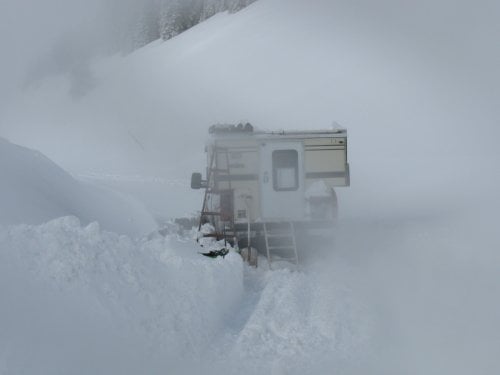WestCoast,
I am hopeful of making a transition this year, from a large outfitter wall tent with wood stove, to FWC, for an upcoming elk hunt in Colorado, at 8500 ft. Wall tents are hard to beat for comfort and warmth with a few people to share the work. ( Ex. You get warm twice with a wood stove, once chopping the wood, once burning it!)
Because snow sticks quite well to canvas, most people with this arrangement throw a blue tarp over top, and tie it down. With a pitched roof, the snow slides off. Although our campers are not built with a sloped roof, I've considered doing two things this year in preparation for a snow load.
I picked up a poly tarp (8'x11'), and plan to tie ropes on all four corners of the tarp. If there is any chance of snow, I'll throw it over top of the camper, tying it off on the pickup, and I'm thinking it might be possible to pull the tarp one direction or the other, and the snow will drop off as I go, or pull the tarp back over itself rolling the snow with it. The main thing is not dropping the roof with all the extra weight, something is sure to break, maybe even you! Might take several times before a storm passes, but it's a way to manage the the snow depth on top, just replace the tarp each time.
The second thing I was planning to do in combination with the above, is make some 6" wide braces out of plywood, that I can place midway on each side of the camper body, wedging them in place along the sideliner up to the ceiling edge, to provide additional support in the middle, not just the two ends of the camper, to reduce sagging.
Still can't allow too much snow to build, but that's the thoughts I've given to it. Maybe someone's already tried this and can respond?
Sent from my iPad using Wander The West







